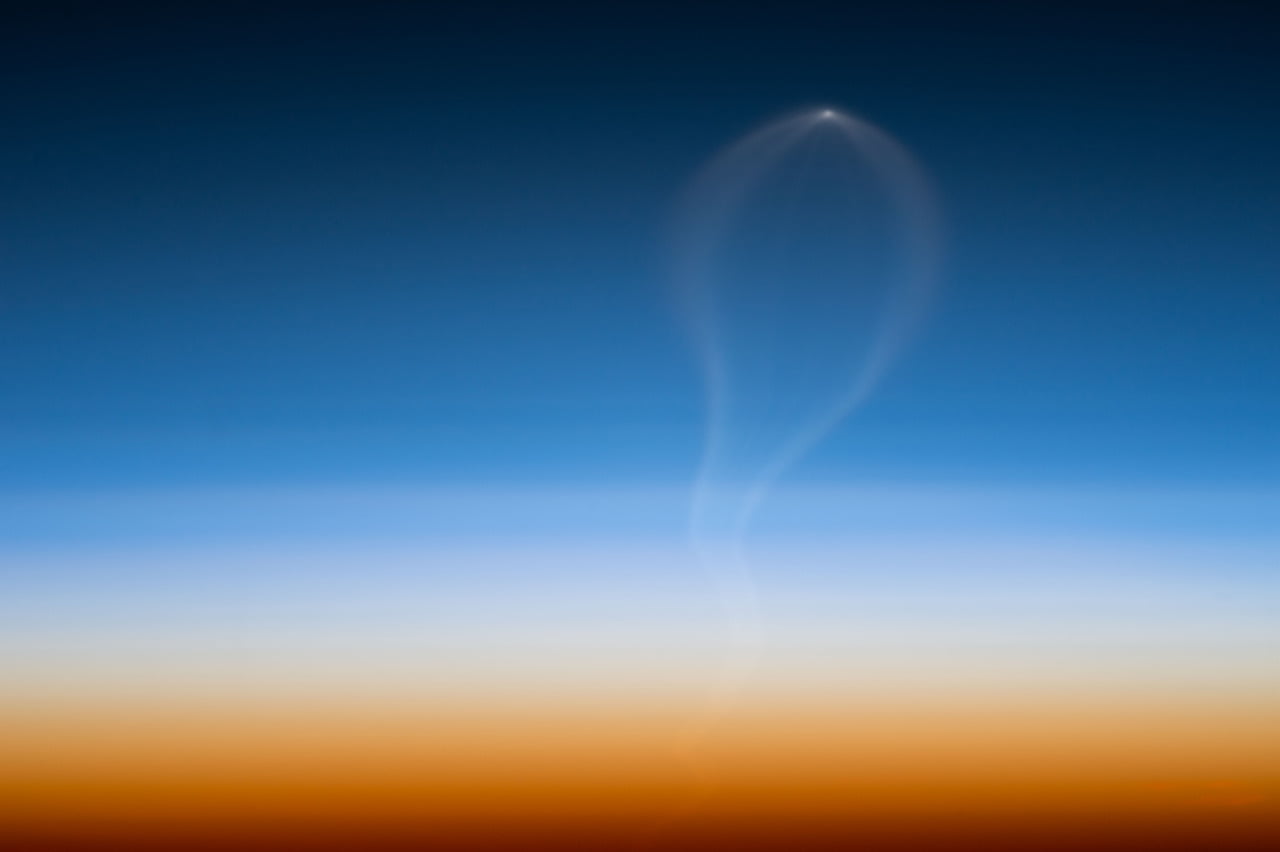Rocket launches often produce spectacular imagery, but it’s rare to get a launch view quite like this one. The photograph above shows the recent launch of an Atlas V rocket as viewed from the International Space Station. The rocket itself is too small to be seen directly. Instead, that bright spot you see is the rocket’s exhaust. The smoky swooping curves mark the rocket’s exhaust plume. Because the gases leaving the rocket are at much higher pressure than the scant air pressure in the upper parts of the atmosphere, the exhaust expands rapidly, ballooning outward. Here the water vapor in the exhaust has frozen into crystals that catch the sunlight and make them stand out against the surrounding sky. (Image credit: NASA; via NASA Earth Observatory)
Tag: underexpanded nozzle

Fireworks Taking Off
Aerial fireworks are essentially semi-controlled exploding rockets. Here Discovery Channel shares high-speed video of fireworks taking off. The turbulent billowing exhaust on the ground is reminiscent of other rocket launches. The tube-launched firework clip is a great example of an underexpanded nozzle. The pressure of the gases in the tube is higher than the ambient air, so when the gases escape, the exhaust fans out to equalize the pressure. And, finally, the explosion that propels the colorful chemicals outward forms jets that can affect the final form of the display. To my American readers: Happy 4th of July! And be safe! (Video credit: Discovery Slow-Down)

Bottle Rocket Shock Waves
This high speed video shows schlieren photography of a bottle rocket’s exhaust. The supersonic CO2 leaving the nozzle is underexpanded, meaning its pressure is still higher than the ambient atmosphere. As a result, a series of diamond-shaped shock waves and expansion fans appear in the exhaust jet. Each shock and expansion changes the pressure of the exhaust until it ultimately reaches the same pressure as the ambient air. This distinctive pattern, also known as Mach diamonds or shock diamonds, often occurs in wake of rockets. (Video credit: P. Peterson and P. Taylor)
Rocket Engine Test
[original media no longer available]
In this static test of XCOR Aerospace’s Lynx rocket engine, Mach diamonds (shown at the top of the frame) are visible in the rocket exhaust. The distinctive pattern is a result of the over- or under-expansion of the exhaust jet with respect to the ambient air; in other words, the gases exiting the rocket are either too high or too low in pressure relative to the surrounding air. A series of shock waves and expansion fans forms in the exhaust jet until the pressure is equalized to ambient. It is these compressions and expansions that form the diamond pattern. (Video credit: XCOR Aerospace)

Rocket Exhaust
This image of the Apollo 11 launch shows the Saturn V’s underexpanded nozzle (identifiable by the excessive width of the exhaust jet) shortly after liftoff. The faint diamond shape of the exhaust is a series of shock waves and expansion fans that equalize the exhaust pressure to the ambient. In general, a rocket nozzle is most efficient when it expands the exhaust to ambient pressure, but, since ambient pressure changes with altitude, designers have to choose a particular altitude for peak efficiency or design a nozzle capable of changing its shape with altitude.


